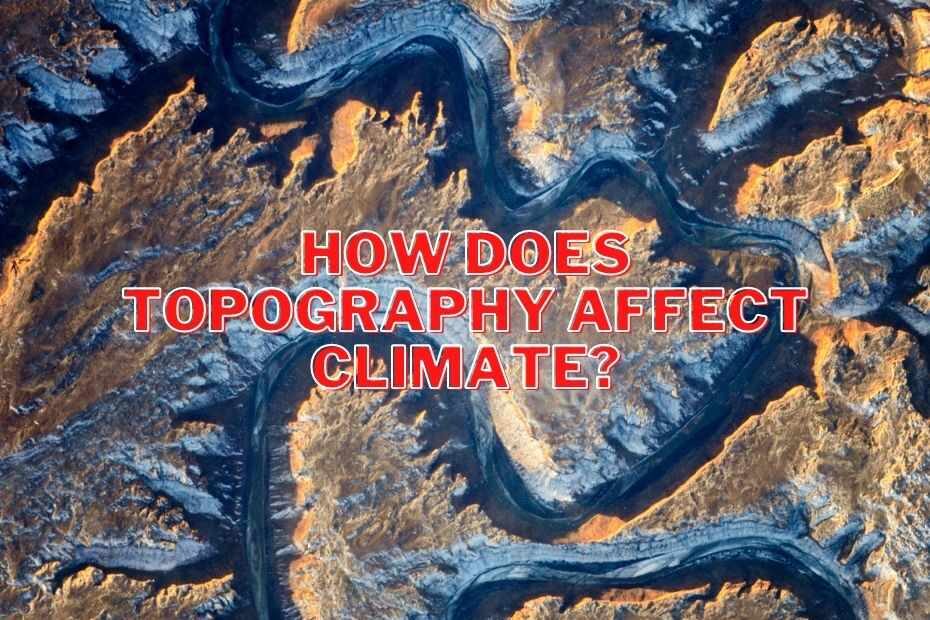The word topography refers to the physical features of the earth’s surface. This includes hills, mountains, valleys, and plains. The climate is influenced by many factors including latitude, elevation, proximity to water bodies and vegetation cover. This article will discuss some of the ways in which topography affects climate.
How Does Topography Affect Climate?
Climate is the state of the atmosphere with regard to temperature, humidity, atmospheric pressure, wind speed and precipitation. It is determined by the latitude, altitude and topography of a region.
Topography has an effect on many aspects of the Earth’s surface including water resources, weather patterns and climate. The main effects are due to elevation changes which impact air pressure and temperature.
Topography has a significant effect on climate. For example, high elevations are cooler than low elevations because they have less atmosphere to trap heat. Higher altitudes are colder than lower latitudes because they receive less solar radiation during the winter months.
What Factors Affect Climate Change?
Climate change has been a hotly debated topic in the last few decades. It is one of the major environmental and social issues that we face today. The factors that affect climate change are many and varied, and it is important to know what they are if we are to take any action to stop climate change.
There are three primary causes of climate change: human activity, natural processes, and variations in solar radiation.
Human activity includes activities such as burning fossil fuels, deforestation, industrial farming practices, etc.
Natural processes include things like volcanic eruptions or changes in solar radiation due to fluctuations in the sun’s magnetic field.
Finally, there are variations in solar radiation which can be due to changes in Earth’s orbit or changes in Earth’s atmosphere.
How Do Mountains Affect Climate?
Mountains have an impact on the climate in many ways, most notably by providing a natural barrier to cold air. They also have an effect on the climate by creating rain shadows and protecting from desert winds.
Mountains are known for their high elevation and drastic climate changes. Although mountains often experience greater biodiversity, it is also common for them to be colder, drier, and less populated than surrounding areas.
For example, the Himalayas are colder than the surrounding areas because of their height. Furthermore, people are more likely to settle in lower altitudes due to the harsh conditions at higher altitudes. However, there are places where mountains have an advantageous effect on climate.
How Topography Affects Wind Patterns
The way in which topography affects wind patterns is that wind flows over the earth’s surface according to the laws of fluid dynamics.
A slope will cause a wind to accelerate downhill, while a hill will cause it to slow down. Wind speed also depends on the temperature of the air and how humid it is.
Topography is defined as “the natural features of a region, including hills, mountains, plains, and valleys.” The effects of topography on wind patterns can be quite significant. For instance, hilly regions are perfect for maximizing the power of the wind because the hilly landscape causes friction between air masses which creates updrafts.
We can see that topography has a significant effect on wind patterns. However, it does not have to be physical terrain that determines airflow. Variables such as temperature gradients can also have an effect on wind flow patterns.
Topography and Climate: How is it Linked?
Topography and climate are linked in ways you might not expect.
The topography of a region is its physical features, including the height of the land, the shape of the surface, and how high it is above sea level.
First, low-lying topography can contribute to the formation of extreme weather events such as floods, and hurricanes. In contrast, high-rising topography is more likely to experience a temperate climate because of the cooler temperatures that tend to be found at higher altitudes.
In addition to being influenced by topography, atmospheric patterns can have a significant impact on climate.
The climate depends on many factors, including latitude, elevation, proximity to an ocean or large body of water, mountain ranges near or far from the region in question.
The height of land can have an effect on climate because it affects temperature and precipitation levels. Regions that are located at lower elevations are more likely to have warmer climates than regions that are located at higher elevations because they are closer to the Earth’s surface and therefore absorb more heat from sunlight.
Conclusion: The Importance of Understanding How Does Topography Affect Climate
The conclusion of this article is that understanding how topography affects climate is important because it can help us make decisions about how to manage our planet’s resources.
The topography is a major factor in climate, especially when it comes to rainfall. The higher the altitude, the more water vapour can be stored and the less likely it will be for the rain to fall. Soil type also has an effect on how high temperatures can reach during the day. Dry soil heats up faster than wet soil would, causing temperatures to rise quickly and maintain that heat for longer periods of time.
Study topography to understand its impact on climate!
